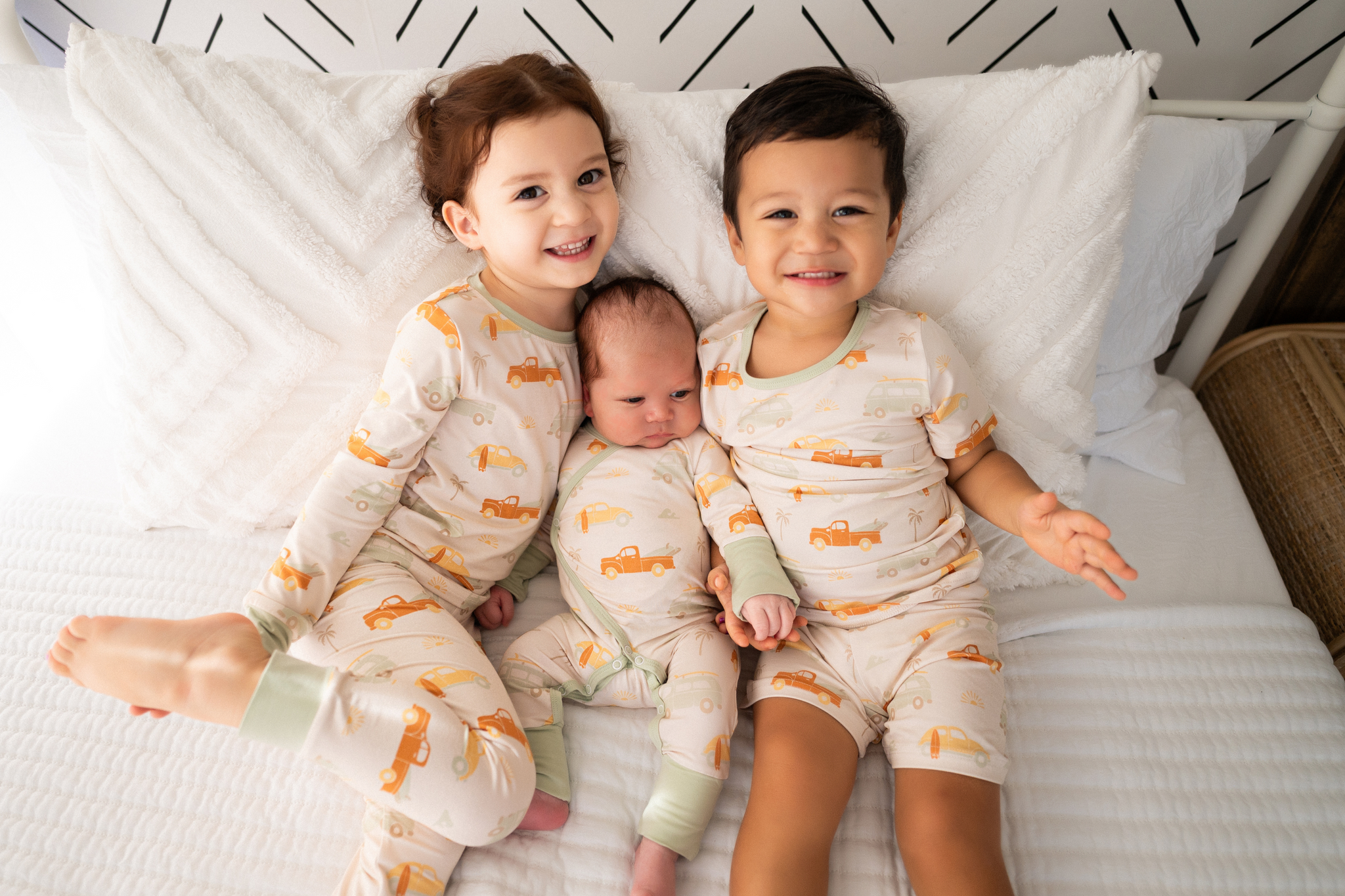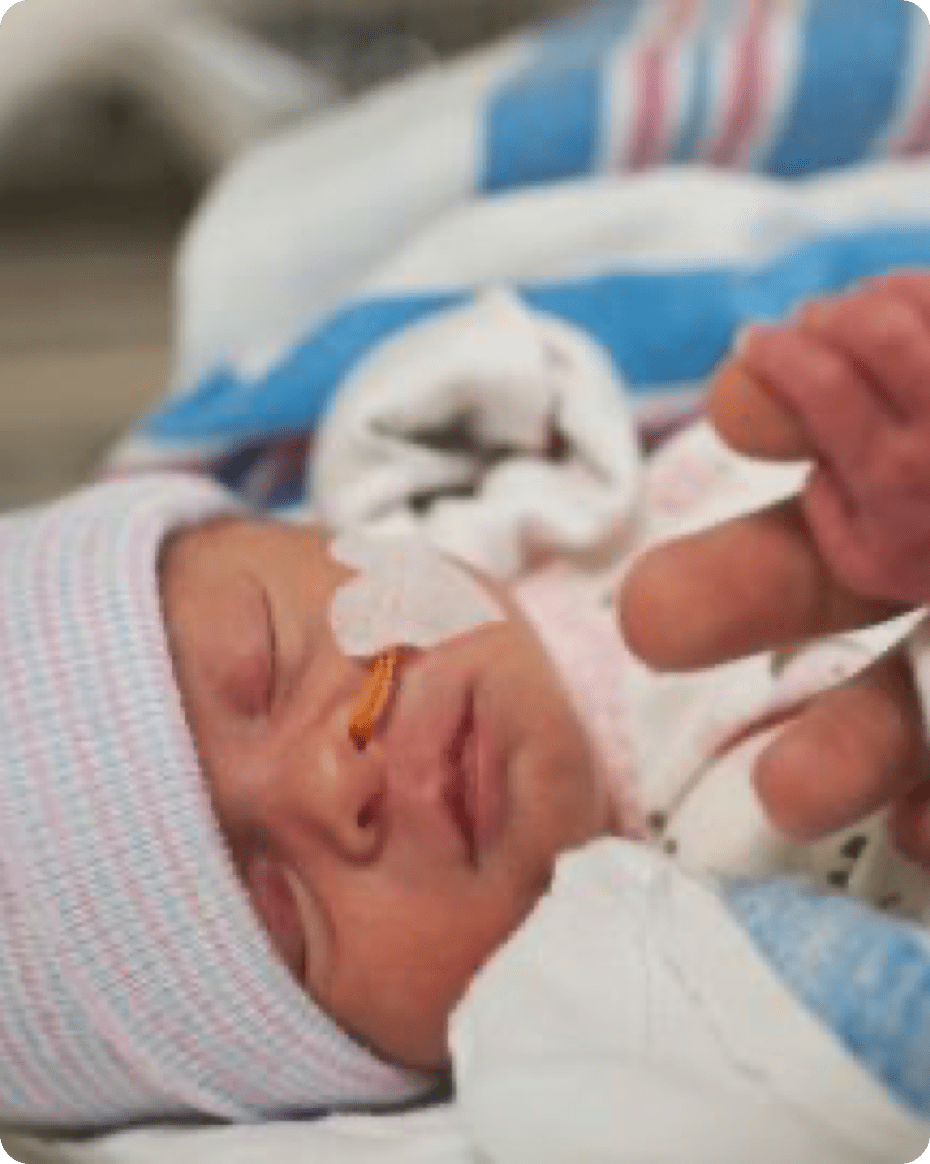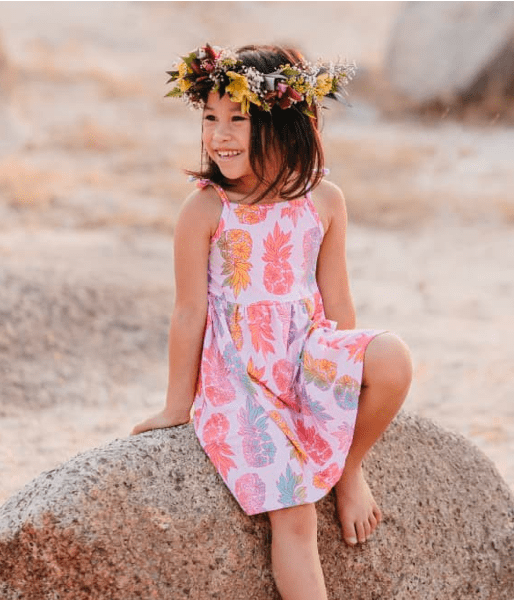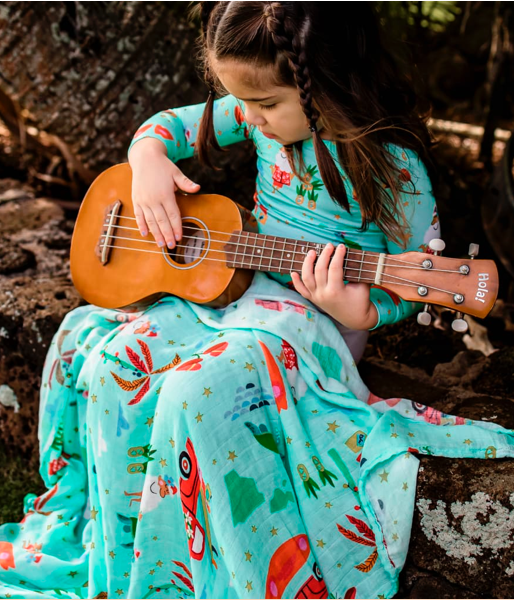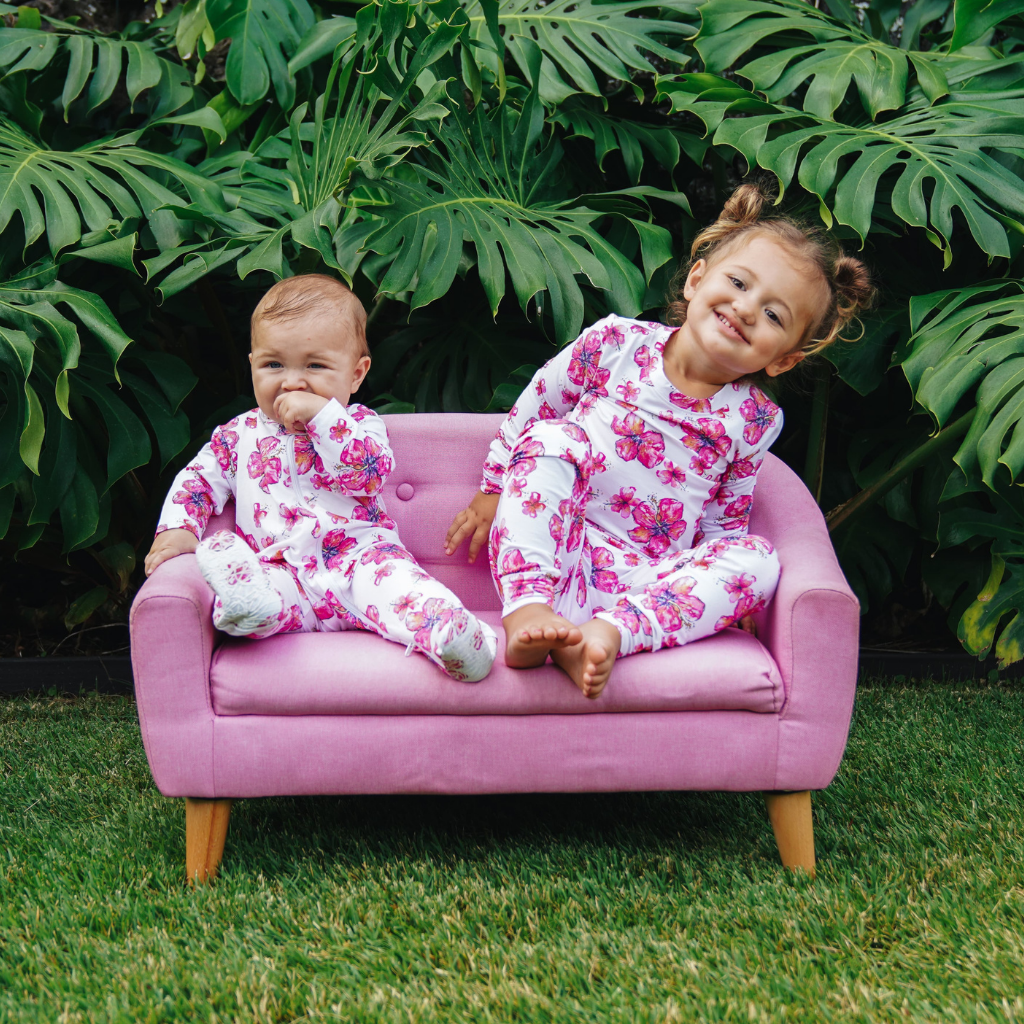As parents, we always try to do as much as we can to ensure our children are safe and healthy. We research our choices, talk to other parents, and do our due diligence, which can sometimes lead to overwhelm! At Coco Moon, not only do we aim to make products that are loved by the entire family, but are also safe and take the guesswork and overwhelm out of shopping for your little one by creating safe children’s sleepwear.
One area that might surprise you pertains to safety standards in children's sleepwear or pajamas.
Whether you’re a first time parent or a seasoned veteran, when purchasing pajamas for your child you’ve probably noticed a bright yellow tag that reads “For child’s safety, garment should fit snugly. This garment is not flame resistant. Loose-fitting garments are more likely to catch fire.”

While this bright yellow tag can seem alarming, it is there for a reason and there is a lot of history behind this yellow tag. We’re here to explain a bit of that history and why we design snug-fitting sleepwear with our children’s safety in mind.
Consumer Product Safety Commission Children's Sleepwear Regulations
Children’s sleepwear is highly regulated by the Consumer Product Safety Commission (CPSC). This regulation dates back to years ago, when smoking cigarettes was common and fire safety regulations like smoke detectors were not as standard in homes as they are today. At the time, much of children’s sleepwear was “loose-fitting” (like nightgowns) and made of highly flammable materials, which caused it to catch fire much easier. When combined with lighters and cigarettes, it was a recipe for disaster.
This caused the government to enact the Flammable Fabrics Act in 1953. The act required children’s pajamas to be flame retardant, which the CPSC determined could be done in two ways:
- Use a material that is inherently flame resistant (and likely uncomfortable, i.e., polyester)
- Treat the fabric with toxic chemicals that would then make the fabric flame resistant.
And please keep in mind, during this time children’s pajamas were intended to fit loosely, so the snug fit pajamas Coco Moon sells today were not even on people’s radar.

This all led to the use of Flame Retardants….
Let’s just say, putting children in pajamas every night that were covered in chemicals proved to be just as dangerous (if not more) as putting them in non-flame retardant clothing.
As reported in the Washington Post in 1977, a study on children's sleepwear safety found that two chemicals that were widely being used in children’s sleepwear (brominated tris and chlorinated tris) were incredibly dangerous and were eventually called to be banned. It was found to be a potent carcinogen and was ultimately banned from being used in children’s sleepwear, but similar chemicals, like bromine and chlorine, continue to be used today!
Eventually, the CPSC found a solution that could solve both the problem of loose clothing being more prone to catching fire, and the dangers that came with using flame retardant chemicals: snug fitting pajamas.
Because fire needs oxygen to burn, if your child is wearing snug fitting pajamas and happens to come in close contact with a flame, the likelihood it turns into something worse decreases dramatically thanks to the limit of oxygen.
The safest children’s sleepwear...
The CPSC requires that children’s pajamas for children aged 9 months to 14 years be snug fitting. The reasoning for this is that babies under 9 months aren’t as mobile and are thus less likely to come in contact with an open flame, which is why you might not see that bright yellow tag on clothing designed for our younger babies. It is also why loose fitting items, like newborn sleep gowns, are considered safe if they also meet the CPSC requirements for certain measurements.
As we emphasize the importance of a “snug fit” it’s important to ensure the snug fit doesn’t cause discomfort. Focusing on soft, breathable materials is a great place to start, as well as ensuring the elastic around the waist and cuffs are secure, but not restrictive.
When shopping for snug-fitting pajamas, take a look at the brand’s size chart! While most children’s sleepwear runs similar in sizing, each brand is still different, and checking the size chart will help with your peace of mind, and comfort for your little one.
Aside from focusing on the fit and feel of the pajamas, remember to take note of the design features. Our little ones are so curious, ensuring that the sleepwear is free of ribbons, sequins, or large apliqués will minimize risks of choking or ingestion.
Even the fastening mechanism is important to take a look at. Zip-ups are great because they’re easy to use and stay secure throughout the night, but snaps are also an option. All in all, focus on fabric, fit, and simplicity when it’s time to purchase to safe sleepwear.
When you’re shopping for safe pajamas for your little ones, that bright yellow tag is a pretty good indicator that there won’t be any flame retardant on the pajamas you’re about to buy. But for good measure, the CPSC also requires that the garment have a permanently affixed neck label that states WEAR SNUG FITTING. NOT FLAME RESISTANT.

Third Party Laboratory Safety Testing of Children's Sleepwear
Aside from the sleepwear requirements, the CPSC also requires third party testing for all children's products to ensure adherence to safety regulations such as flammability, lead content and surface coatings, small parts, and phthalates. All companies that sell children’s products must also maintain Children’s Product Certificates (CPC). This document certifies that the children's products comply with applicable children's product safety rules.
PS: The CPSC highly discourages putting children to sleep in nightgowns, t-shirts, or any loose fitting clothing as it increases the chances of catching fire if exposed to a flame. AKA - Coco Moon’s snug-fitting pajamas are the safest way to go!
Some tips for when it comes time to purchase safe sleepwear...
Reading product reviews
Product reviews are a great way to understand the type of sleepwear you’re buying. Parents know best, and hearing from parents who have already used a certain brand of sleepwear will give you authentic insight into what you’re considering purchasing for your child.
Shopping from reputable brands
Popular brands are popular for a reason! They’re quality control is often very stringent, and this can reduce the chances of receiving hazardous sleepwear. While this may come with a higher price point, investing in safety and quality is often worth it for your child’s well-being and your peace of mind.
Inspecting pajamas before purchase
Regardless of the brand, make sure you take a look at the pajamas before putting your little one in them. Make sure there aren’t any loose buttons, snaps, or anything else that could pose a risk. Also make sure you give them a wash before dressing your child in them!
Shopping within your budget
Safety is always top priority, but you can still shop safe sleepwear options within your budget. Pay attention to sales and discounts for your favorite brands, so you don’t have to sacrifice your budget for safety.
Wearing hand-me-down or secondhand pajamas and want to ensure they’re safe?
The process will be similar when shopping for new sleepwear!
Inspect for loose buttons, stretched out elastic, or anything that could compromise safety. Check that the zippers or snaps are all functioning properly and aren’t damaged, and make sure to wash the pajamas thoroughly before dressing your little one in them. Overall, make sure they meet current safety standards, are comfortable, and that you feel good about your child wearing them!
Share your knowledge with other parents
Children’s sleep safety is one of the most frequent topics of discussion for new and experienced parents. While addressing the many other factors that encourage children’s safety while sleeping, it’s important to mention sleepwear, too.
Remind other parents to pay attention to the materials they are putting on their baby, what it’s made out of, and how safe it is. Just because something is designed for children, does not always mean care and safety is put into the crafting of it.
Share information about safe sleepwear, like this blog, as well as recommendations on brands that are safe for your little ones!
Coco Moon Children’s Sleepwear Puts Safety First
We started this company because we wanted our keiki (children) to carry or wear a piece of island-soul with them wherever they are. And part of that comes with ensuring they do so in a way that is safe. We’ve taken the steps to ensure that our clothing meets all safety requirements put in place by the CPSC. If you have any questions, please feel free to reach out to us! Your keiki’s (child's) safety is our #1 priority.
In the meantime, shop our CPSC certified snug fitting pajama and bring your keiki island inspired designs that cover them in aloha, comfort, and safety from head-to-toe.


